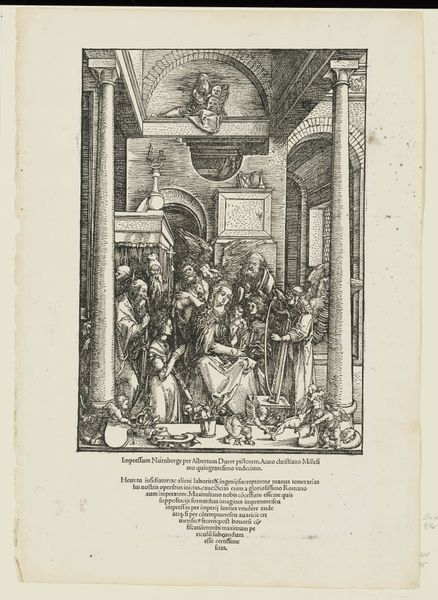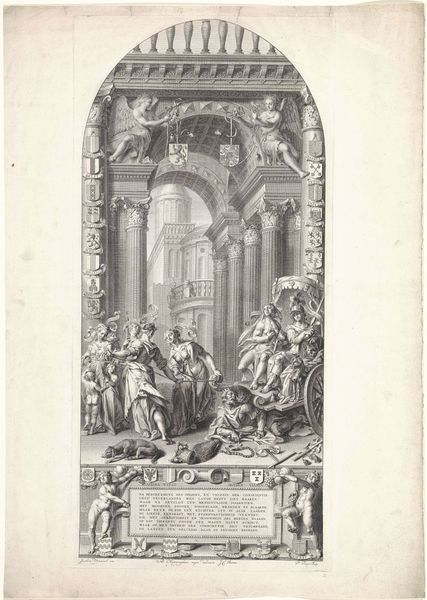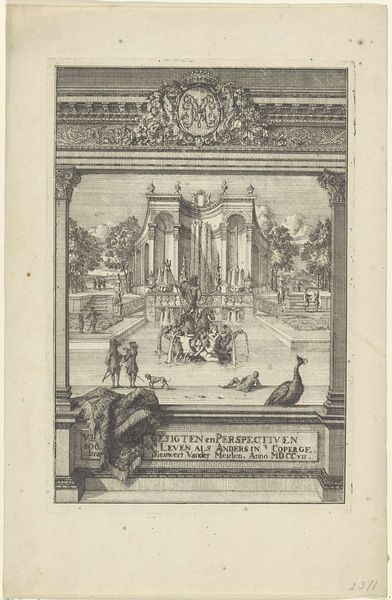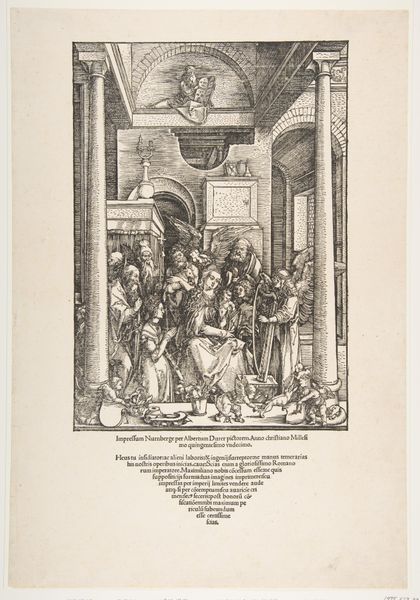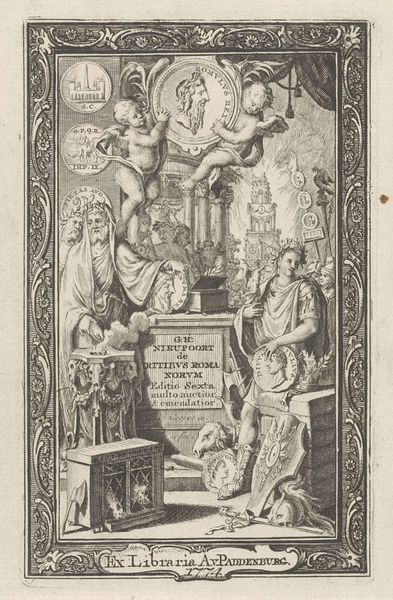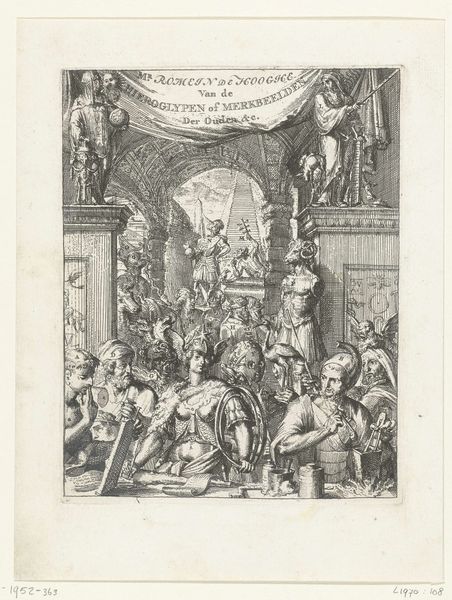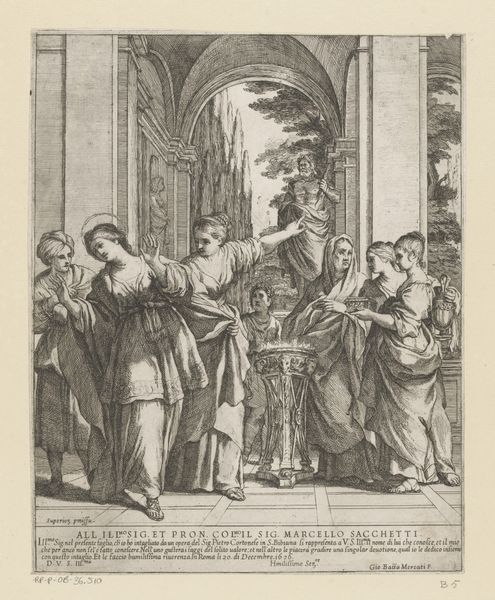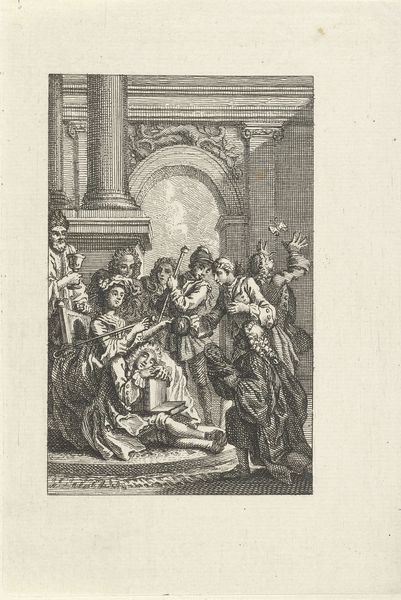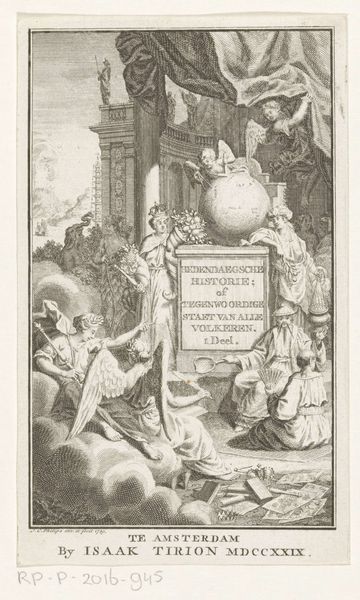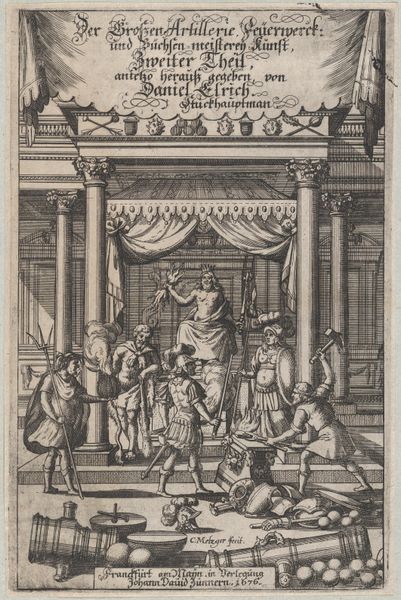
metal, engraving
#
aged paper
#
allegory
#
baroque
#
metal
#
old engraving style
#
personal sketchbook
#
history-painting
#
engraving
Dimensions: height 181 mm, width 135 mm
Copyright: Rijks Museum: Open Domain
Curator: Let’s explore Lambert Visscher’s title page for the “Monumenta Paderbornensia, 1672.” It's an engraving teeming with classical imagery. Editor: Yes, “Monumenta Paderbornensia, 1672” by Lambert Visscher. It’s executed in metal engraving. At first glance, it's a rather complex composition, with those figures at the bottom. What can you tell me about how its historical context influences its meaning? Curator: Absolutely. This work needs to be seen through the lens of its era, shaped by political, religious and social shifts. Engravings such as these played a crucial role in disseminating knowledge and shaping public opinion in the 17th century. The ruined architecture combined with powerful figures represents the endurance and revival of Paderborn through documentation and its rich, complex history. Note the strong men with flowing water. Any ideas about the significance of the imagery, specifically their placement at the bottom of the page? Editor: Well, given the time period, the reclining figures could symbolize rivers or local springs, like the Pader spring, reinforcing a connection to the land and fertility? Curator: Exactly. And beyond geography, these powerful allegorical figures ground the history detailed in the “Monumenta Paderbornensia.” What do you make of the inscription on the monument? It seems to connect "Roman" and "Franconian" history to "sacred inscriptions". What is the effect of that statement on a 17th century audience? Editor: By linking Roman and Frankish heritage to Paderborn, the title page may be making an argument for the legitimacy and deep historical roots of local customs and governance in the region. Curator: Precisely. And how does understanding its political implications shape our interpretation of this title page and other art of that era? Editor: That context gives me a fuller picture of the function of art back then, it makes me curious about who commissioned this and how these publications may have influenced historical perceptions and local political power. Curator: A superb reflection. By looking beyond just aesthetics, we begin to see art as part of the socio-political ecosystem of its time.
Comments
No comments
Be the first to comment and join the conversation on the ultimate creative platform.
